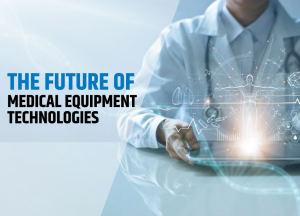In recent years, much progress has been made in the medical field with the development of revolutionary technologies and products. From artificial intelligence to innovative surgical techniques, these 10 innovations have changed the way healthcare professionals provide care to patients around the world.
Robotic Surgery: Revolutionizing Surgical Procedures
Robotic surgery is one of the most revolutionary medical developments of the past decade. This technology allows doctors to perform complex and delicate operations with minimal invasiveness, allowing quicker recovery times with fewer side effects. By using robotic arms and 3D cameras, surgeons can now access areas that were previously impossible to reach while maintaining a greater degree of precision than ever before.

Wearable Medical Devices: Providing Continuous Monitoring and Data Collection
Wearable medical devices are transforming the way doctors monitor and treat patients. From fitness trackers that help measure vital signs to smart glasses used for diagnoses, these technologies are allowing doctors to collect a variety of patient data in real-time, leading to faster and more accurate diagnoses. With medical wearables taking off in recent years, health professionals are now able to provide truly personalized care for each and every patient.

3D Printing: Changing the Way We Analyze and Create Replacement Parts
3D printing has revolutionized the medical technology industry. By building objects layer by layer, doctors can now generate complex organs and prosthetics beyond what was possible in traditional manufacturing. These biocompatible parts are often made with patient’s own cells, making them less likely to be rejected by their body. 3D printing also enables quicker turnaround times on various medical projects, helping reduce patient wait times and improve accuracy of diagnosis.

Online Appointments and Communications: Increasing Accessibility to Care
Another great advancement in medical technology has been the introduction of online appointments and asynchronous patient-doctor communications. Many medical systems now offer remote access to healthcare through telemedicine and virtual visits, which allow doctors to provide care when it’s convenient for patients. This development has had especially profound effects on rural areas where it was historically difficult to access doctors or specialists. By removing physical boundaries, telemedicine opens up a much needed avenue for routine checkups and specialist consultations that weren’t available previously.
Molecular Diagnostics: Enhancing Treatment Planning Before, During and After an Illness
Molecular diagnostics (MDx) is a method of molecular testing that can detect or monitor an illness at the molecular level. Today, this technology is used by all medical specialists, including oncologists, pathologists, and clinicians, to gain insights into a person’s genetic makeup through analysis of biological molecules. Knowing a patient’s particular diagnosis can allow doctors to create highly specific treatment plans tailored to their condition and improve prognosis rates. MDx has allowed physicians to better diagnose illnesses before symptoms appear, allowing for earlier intervention and treatment.
Artificial Intelligence: Improving Diagnosis and Treatment Accuracy
Artificial Intelligence (AI) has become increasingly popular in the medical industry over the past decade. By analyzing vast amounts of patient data, AI algorithms can predict potential health issues and provide insights into treatment options, helping healthcare professionals make more informed decisions. AI-powered medical imaging systems can also help identify diseases such as cancer at an earlier stage, allowing for more effective treatments and better patient outcomes.
Nanotechnology: Delivering Medications with More Precision
Nanotechnology has transformed the way medication is delivered to patients. By using nanoscale particles, doctors can target specific areas of the body, delivering medication with greater precision and efficacy. This technology is particularly useful in cancer treatment, where nanomedicine can help destroy cancer cells without damaging healthy ones. With the development of targeted drug delivery systems, patients can now receive personalized treatment plans that are more effective and cause fewer side effects.

Virtual Reality: Enhancing Medical Training and Patient Care
Virtual reality (VR) technology has become increasingly popular in the medical industry over the past decade. Medical professionals are now using VR simulations to improve training for medical students and provide continuing education for healthcare professionals. VR technology is also being used to treat patients suffering from conditions such as PTSD, phobias, and chronic pain. By immersing patients in a virtual environment, healthcare professionals can create a safe and controlled environment for patients to confront their fears and symptoms.

Genome Editing: Customizing Treatment Plans for Patients
Genome editing technologies such as CRISPR/Cas9 have revolutionized the way scientists approach genetic disorders. This technology allows researchers to precisely target and modify DNA sequences, opening up the possibility of customized treatment plans for patients with genetic disorders. By editing genetic sequences, doctors can potentially cure certain diseases before they even appear, providing patients with a healthier and longer life.

Electronic Health Records: Streamlining Healthcare Administration
Electronic health records (EHRs) have become a staple in medical practices over the past decade. EHRs allow healthcare professionals to share patient data easily and efficiently, streamlining healthcare administration and reducing medical errors. With the integration of EHRs into healthcare systems, healthcare professionals can access patient data from any location, improving patient care and reducing the risk of medical errors.

In conclusion, the past decade has seen a rapid acceleration of technological advancements in the medical field, transforming the way healthcare professionals approach patient care. From robotic surgery to electronic health records, these innovations have significantly improved the accuracy and efficiency of healthcare delivery while improving patient outcomes. As technology continues to advance, we can expect even more revolutionary medical technologies in the years to come.




